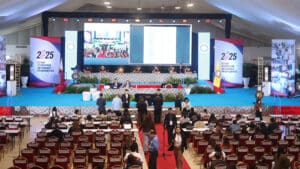The Philippines may end the year in an unusual position: Exporting more goods than it imported during the whole year as cheap fuel cuts the country’s import bill.
American financial giant JP Morgan said this should leave space for the government and business to accelerate imports of capital goods such as equipment or construction materials without putting a strain on the country’s reserves.
In a note to clients, JP Morgan said the country would benefit from “the recent sharp declines in fuel prices.” “This could easily swing the trade balance to surplus by the end of the year,” the bank said.
Philippine imports fell 1.7 percent month-on-month, leaving imports down 2.6 percent year-on-year.
Lower imports at the end of the third quarter were also partly a result of “very soft” imports in April to June, which were affected by logistical bottlenecks at the ports.
The September trade balance came in at a surplus of about $300 million, due in large part to strong exports.
“The decline in oil prices should lift trade balance into solid surplus—leaving comfortable buffer for capex-related imports,” JP Morgan said.
This oil-related windfall comes at a time when domestic fixed investment is expected to gather steam, reflecting the implementation of the big-ticket public private partnership (PPP) projects in late 2014 and into 2015, and “should provide a helpful buffer for the external balances.”
The country’s consistent annual trade deficit has long been a drain on the nation’s external payments position, which measures the economy’s revenue streams from abroad. This deficit, which means the country imports more than it exports, is more than made up for by the steady flow of remittances from migrant workers.
Last month, the Bangko Sentral ng Pilipinas (BSP) revised its balance-of-payments projection for the year to a deficit of $3.4 billion, worse than the previous forecast of a surplus of over $1 billion.
The current account, strips out nonrecurring income such as earnings on investments, is expected to hit a surplus of $6.6 billion, up slightly from a June projection of $6 billion.



